by Ammar Azzouz and Irit Katz
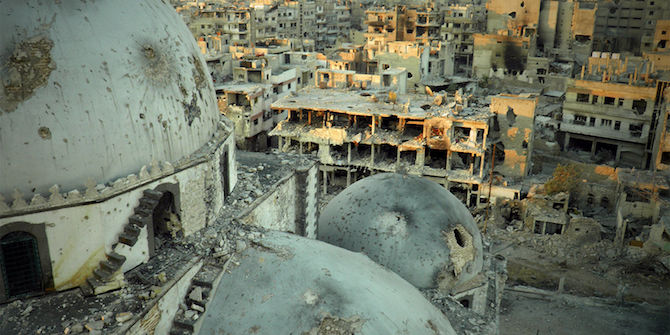
The urban nature of the Syrian conflict has caused heavy physical damage to cities and the internal displacement in Syria is also inherently urban. Many of the 6.5 million Internally Displaced Persons (IDPs) in Syria have been displaced, sometimes several times, within their own cities. IDPs have been unable to leave the country and seek refuge abroad for reasons such as lack of resources, besiegement, or loss of documents. In other cases, they simply did not want to leave their homeland and hometown.
The Syrian refugee crisis has attracted significant attention by media, researchers and policymakers, yet responses to internal displacement in Syria have not been equally considered. There is, therefore, a need to examine the strategies and mechanisms taking place in Syria to help IDPs access shelter and re-establish their everyday lives during the conflict.
Homs, the first author’s city of origin, where approximately 314,400 IDPs live today, stands at the focus of this analysis. The city is considered as one of the most effected cities in Syria in terms of proportions of damage and displacement. While most of the displaced people of Homs have left the city, 44 percent have been displaced within the city: approximately 58 percent of its current population.
Shelter types for IDPs
In their search for shelter, IDPs and those who support them (local hosts, NGOs and international NGOs) have adopted several approaches, each with its specific social, spatial and economic implications. One of the most dominant mechanisms for shelter is hosting, when IDPs share flats with relatives and friends or are being provided with an entire flat in the case where the owner has multiple properties, has fled the war or had been living abroad beforehand. While this practice builds on the strong social connections in Homs and the desire to help each other, it also helps to keep these empty homes secured from looting. Renting (usually collective renting, when more than one individual or family share a house or a flat) is how many other IDPs manage. In 2014, as noted in Un-Habitat’s City Profile Homs report, hosting and renting together formed more than 50 percent of the shelter types for IDPs in the city.
Another substantial response to displacement has been the emergence of collective shelters in public buildings. Schools, mosques and churches have been temporarily subdivided to host displaced families. Collective and individual shelters also exist in private buildings, including incomplete skeleton buildings which were upgraded to a habitable level. As some of these unfinished buildings were not connected to infrastructure and did not include basic facilities such as kitchens and bathrooms, the process of preparing them for habitation was both complex and expensive, involving negotiations between the owners, local NGOs and international NGOs (INGOs).
Today, multiple charities, NGOs and INGOs, including the Syrian Arab Red Crescent and the UNHCR, are working in different scales and levels to provide shelter for IDPs in Syria, and assessment projects are conducted to map damage. Based on these maps, projects are directed towards rehabilitating the partially damaged buildings to support IDPs returning to their homes, aiming to repair clusters of buildings to improve the chances to revive urban areas which have been completely deserted. Kits for damage repair are also provided by international humanitarian agencies, and local charities provide support to families of IDPs based on specific needs and urgencies after assessing their situation.
Ongoing and emerging challenges
Despite the humanitarian responses and emerging actions of reconstruction, there are significant challenges facing IDPs in Syria. Poverty is sweeping across Syria, with four out of five Syrians living under the poverty line; according to the World Bank, unemployment among young Syrian people reached 78 percent in 2015. While NGOs and INGOs are funding the repair of damaged houses, it is possible to receive such a ‘repair grant’ only once and, as there are some citizens who fear that their houses could potentially be damaged again, people prefer to wait before applying for such funding. These IDPs stay in the locations where they are displaced, waiting for the conflict situation to become clearer.
These, however, are not the only reasons that have encouraged many IDPs in Homs to remain in their new areas. An expert from a humanitarian agency who was recently in Syria for a mission related to shelter for IDPs, and who wished to remain anonymous, explained that one of the most difficult challenges is to recover entire urban areas and make them suitable for human habitation. While many in Homs have indeed returned to their ruined neighbourhoods and repaired their damaged houses, some of them have left their homes again due to the lack of basic urban infrastructures and services in the partially and heavily damaged neighbourhoods. They have therefore returned to other better-maintained areas in Homs where the markets, schools, and medical centres are functioning, and where there are more families around them and a better sense of community. Another issue is that, after more than six years of conflict, many IDPs have re-established their lives elsewhere in the city, creating new social, economic and other meaningful connections in the places to which they were displaced.
It is important to emphasise that some families have already returned, resettled and begun to repair their partially damaged houses, yet currently there is lack of data on the numbers of returnees in Homs.
Thinking of displacement and return beyond the ‘shelter’
Beyond the initial challenges of providing emergency shelters for the internally displaced, and the later challenges of repairing houses and entire parts of the city after the violence has stopped, there is the human challenge of bringing people back to their original homes and neighbourhoods, which are now deserted and in ruins. For those who have re-established their lives somewhere else, return, in many cases, also means being uprooted again.
Policy-makers, NGOs and INGOs should therefore address not only the physical damage of the built environment but also non-physical factors including security, freedoms, vitality and sense of belonging, and to think creatively about a vision which is beyond ‘shelter’. The destruction of Homs has made parts of the city unrecognisable, and the movement of its citizens outside the city has changed its economic, social and cultural fabric; the sinews of everyday life. Many citizens say they feel like strangers in their own city, lamenting that the city has ‘lost its soul’ and that ‘there is not [as] much life as before the war’.
For Homs’s recovery, lessons should be learned from other post-conflict cities, but no less important is the careful examination of the urban processes that have happened in Homs during the war, taking them into consideration while planning its post-conflict future. Self-reliance and self-healing are inseparable parts of these processes and should be the core of local governance, NGOs and INGOs in order to empower Homs’ communities and enable them to recover from the pain, damage and trauma that has changed them as well as their city.
This is an abridged version of a paper given at a conference on Responses to Displacement in the Middle East, held at the LSE on 30 November 2017. See below for the full list of papers.
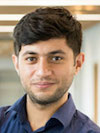 Ammar Azzouz is a London-based architect and a PhD researcher at the University of Bath. He currently works at Arup where he is undertaking a research project on ‘Urban resilience in Homs during and after the conflict.’ His research focuses on resilience and the local and international responses to the crisis in Syria. He tweets @AzzouzAmmar
Ammar Azzouz is a London-based architect and a PhD researcher at the University of Bath. He currently works at Arup where he is undertaking a research project on ‘Urban resilience in Homs during and after the conflict.’ His research focuses on resilience and the local and international responses to the crisis in Syria. He tweets @AzzouzAmmar
 Irit Katz is an architect and Postdoctoral Fellow at the University of Pennsylvania’s Perry World House, and an Affiliated Lecturer at the Department of Architecture, University of Cambridge. She studies camps and urban areas with a particular focus on spaces of displacement, migration, and refuge. She tweets @irit_katz
Irit Katz is an architect and Postdoctoral Fellow at the University of Pennsylvania’s Perry World House, and an Affiliated Lecturer at the Department of Architecture, University of Cambridge. She studies camps and urban areas with a particular focus on spaces of displacement, migration, and refuge. She tweets @irit_katz
In this series:
- Introduction by Zeynep Kaya
- The Politics of Return in post-ISIS Iraq by Kyra Luchtenberg
- Going Back or Staying Better: Processes of Return After Displacement due to ISIL by Nesreen Barwari
- Returnees in Syria: Sustainable reintegration and durable solutions or a return to displacement? by Schadi Semnani
- Breaking the Vicious Circle: Exploring Alternatives to Current Responses and Solutions to Internal Displacement in Yemen by Stean Auguste Tshiband
- Iraq after the Islamic State: Displacement, migration and return by Irene Constantini
- Displaced and on the Move Again: Decision-making among IDPs who migrate to Europe by Megan Passey
- Violence, Insecurity and the (Un)making of Rukban Camp by Suraina Pasha
- Between International Influence and Domestic Politics: The case of the refugee control policy towards Syrian refugees in Lebanon by Zad El Hage Sleiman
- A Phenomenological Exploration of the Gendered Vulnerabilities of Internally Displaced Syrians by Jaclynn Robinson
- Chaos and Fear: Governmental strategies to hinder national and international humanitarian responses to internal displacement in Turkey by Eva Jones
- Administrative Violence and Palestinian Displacement in West Bank Area C by Mustafa Fatih Yavuz
- Local Integration in the Context of Protracted Displacement Inside Syria by Simon Verduijn



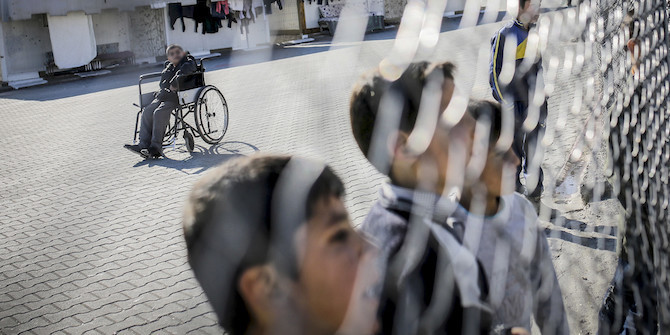
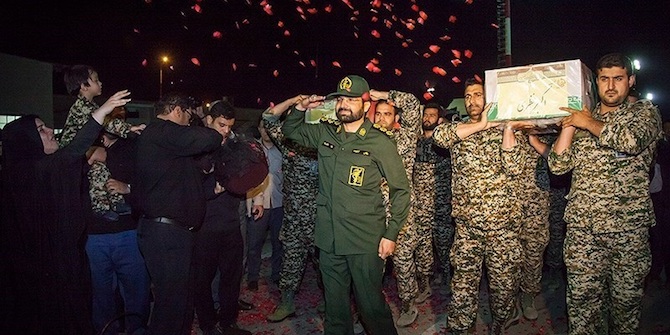

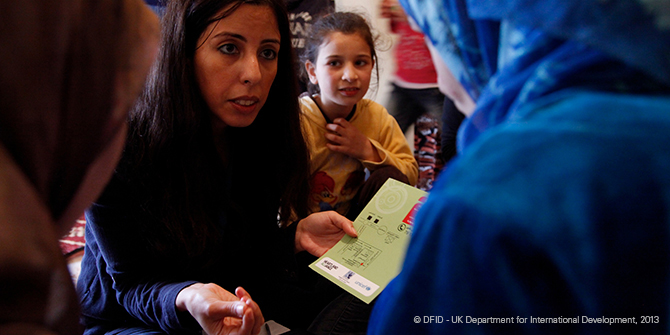
Think you for sharing very informaive information and check this website Naukari Alert